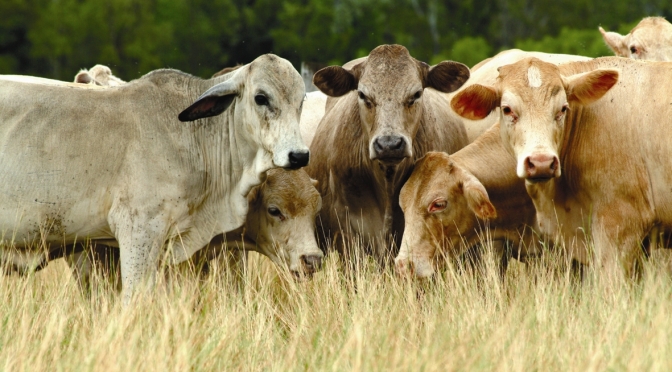Choosing the right type of supplement
It is important to weigh up the price per tonne of supplement against freight, infrastructure and labour costs when choosing the right type of supplement. Loose licks, blocks and stock feeds are common and effective means of supplement.
Licks
Licks are loosely mixed formulations that supplement available feed (pasture). They are usually fed from troughs. Many mixes are vulnerable to wetting, so trough should be covered and contain drainage holes.
Management practices when feeding LICKS
- Ensure a plentiful supply of pasture or stubble is available when feeding licks
- Pour licks into well drained troughs and allow cattle free access
- Locate troughs a minimum of 30 metres from watering points
- Once stock are consuming the loose lick, if possible move troughs out further from watering points. This will help to avoid over consumption and encourage stock to graze out, utilising available paddock feed.
BLOCKS
It is convenient to feed blocks-they can be placed in different parts of the paddock to encourage more extensive grazing. Their high nutrient density means ease of freight and handling.
For palatability, blocks are based on salt or molasses. Salt is cheap and provides sodium but in some districts cattle do not seek salt. In these cases molasses is a highly palatable alterative that provides a concentrated source of energy. Rumevite blocks are weather resistant and can be fed in the open.
Management practices when feeding BLOCKS
- Ensure a plentiful supply of pasture or stubble is available when feeding blocks
- Place blocks on high well drained ground, a minimum of 30 metres from watering points.
- Once stock are consuming the blocks, move them out further from watering points. This will help to avoid over consumption and encourage stock to graze out, utilising available paddock feed.
STOCK FEEDS
When permanent feeding facilities with good paddock access are available, stock feeds and concentrates mixed with grain or molasses may be very cost effective.
When using these products a plentiful supply of water and roughage must be available to your cattle.
Stock feeds usually contain cereal grain, and may be pelleted, rolled or steam rolled.


